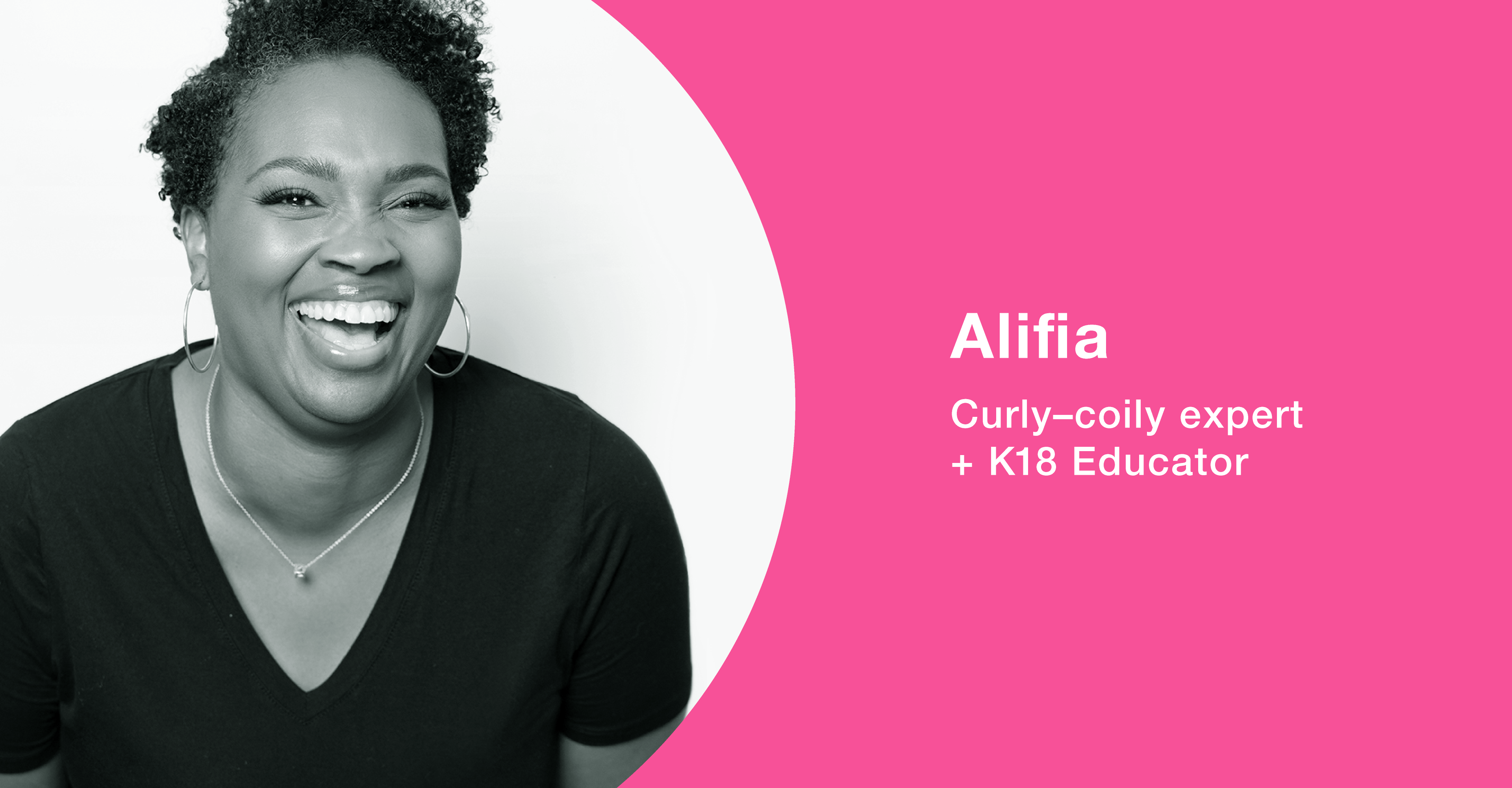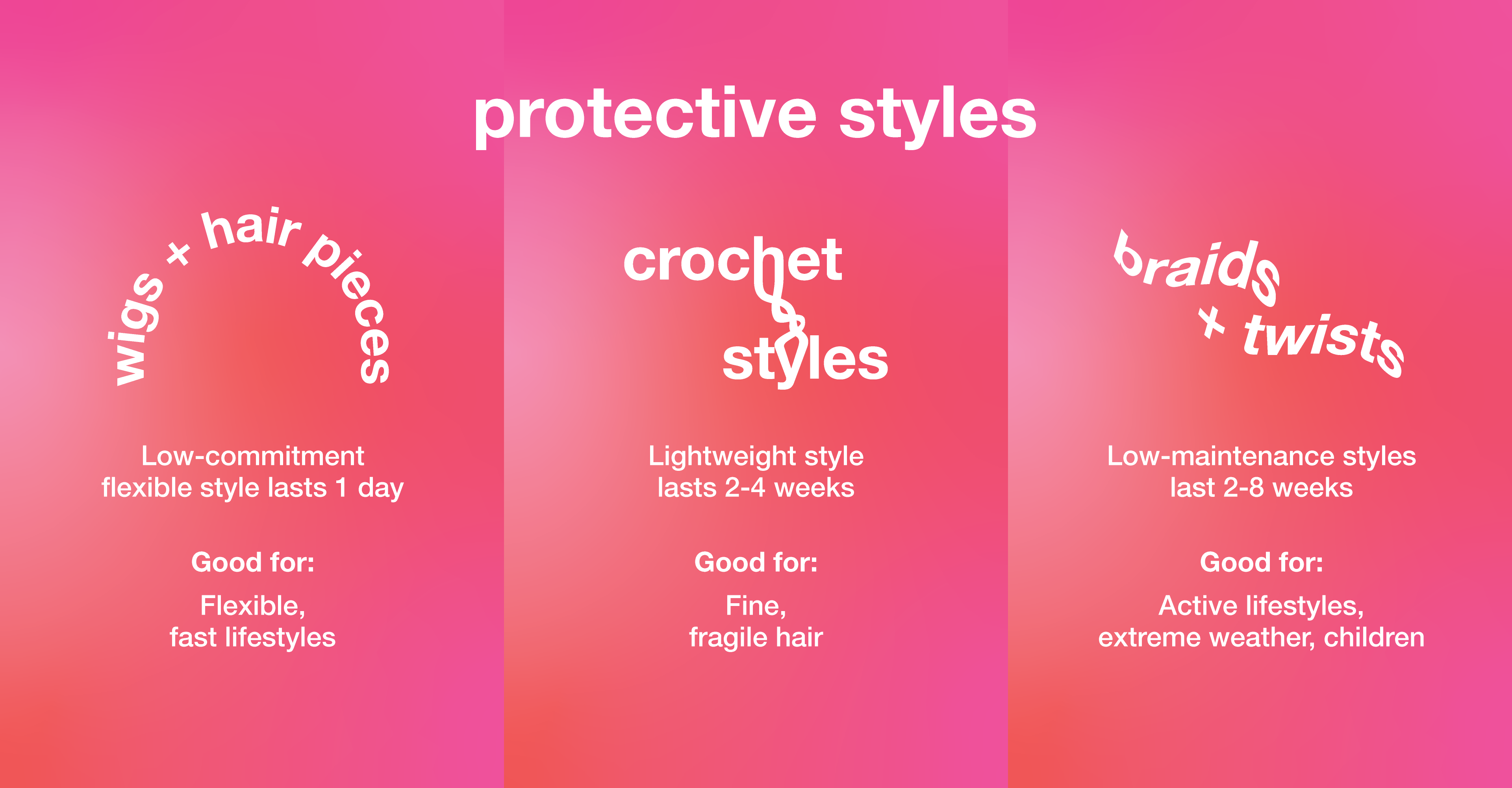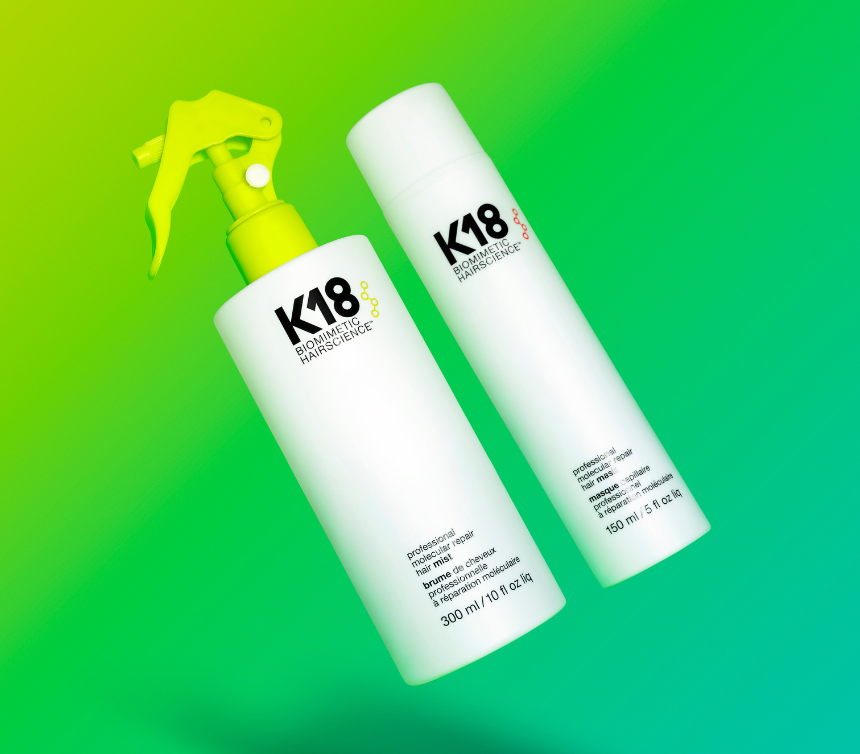Entender y cuidar los estilos protectores con la experta PRO, Alfia

Protective styling season is officially here, which means curly + coily clients are ready to protect their strands through the harsh winter weather. If you’re new to these low-maintenance looks or need a refresher, check out my guide to understanding and caring for braids, crochet styles, and everything in between.
what are protective styles?
This is a hairstyle that’s meant to reduce tangling and breakage from manipulation, heat styling, and even reduce exposure to environmental elements like wind, humidity, and rain.
All this stresses out and damages curls and coils—especially the fragile ends. Just like tucking the ends into a hat, protective styles protect hair from this damage.
Does this mean it’s good for hair growth? Yes and no. While they do protect curls and coils from the elements + mechanical damage, this doesn’t necessarily promote hair growth. If anything, the tension from improper installation, or wearing the tight styles too long can cause breakage. Hair growth can appear significant after unfurling their strands, but this can be from seeing their new length all at once, instead of small changes every day.
types of protective styles
The cool thing about protective styles is there’s no one-size-fits-all look, so the possibilities are endless. If your client doesn’t know where to start, check the condition of their hair, and ask how long they plan on rocking this look. This easy guide can point your client in the right direction:

If your client wants to switch out their look daily, recommend wigs + hair pieces that they remove before bed. If they want a longer-lasting style, tell them about braids and twists! For clients with fine, fragile hair, I recommend crochet styles that use synthetic or human hair crocheted into the natural hair base. This gives them the look of braided styles in half the time (so you can see more clients + make more money), without adding much weight to their mane.
Now let’s talk tension. Some protective styles like braids, twists + crochet styles call for pulling at the scalp, which can lead to hair breakage, and even traction alopecia. If this raises some red flags with your clients, advise them to switch it out sooner than usual, and go for shorter, lightweight styles for less tension. During the installation, I ask if they’re feeling any pain, or if I’m adding too much hair for their comfort level. Proper communication helps ensure a smooth salon appointment for everyone involved.
the prep step
Now that you know what kinds of protective styles are out there, here’s how to properly prep your client’s strands.
Tackling buildup is a must, as it can weigh down their curls and coils for rough, damaged and frizzy hair. Before the service, use the K18 detox shampoo to gently but effectively remove 99% product buildup, 95% sebum + 76% copper*. This pH-optimized formula resets your client’s hair’s texture + bounce without tangling or stripping their color or moisture levels. If you still notice that sticky feeling, do a demineralizing/chelating treatment to remove all that stubborn metal + mineral buildup for a clean hair base.
To mitigate breakage with tight hairstyles, go in with K18REPAIR™ (PRO mist + mask) to double down on the K18PEPTIDE™. These formulas repair broken keratin chains in the inner-most layers of hair in just 4 minutes. That means renewed core strength and elasticity for easier installation, and stronger, healthier curls and coils.
the wash routine
Let’s tackle washing protective styles. Whether your client is coming in for a refresh or cleansing at home, it’s important to remove buildup blocking hydration and products from penetrating their curls + coils. The PEPTIDE PREP™ detox + DAMAGE SHIELD pH protective shampoo do just that. Engineered with your hair’s optimal pH in mind, these gentle formulas tackle all buildup levels to prolong these protective styles.
Pick your clean based on their level of buildup, and get into this wash routine:
- Segment the hair into 4 quadrants.
- Rub a quarter size of shampoo with water until it lathers.
- Massage just the scalp section by section.
- Thoroughly rinse, and let the suds run down the length of their hair.
- Repeat if their hair still has buildup.
- Plop or target dry with a moisture-wicking towel for fast drying without damage.
PRO tip: Tell your clients to let their locks dry fully before sleeping or styling. Wet hair runs the risk of developing dandruff, fungus, or even mildew, especially near the scalp—and we don’t want that.
post-protective style
When they're ready to take out the protective style, this is when you’ll clarify, repair, and advise them to rest their hair. But first, be sure to detangle pre-shampoo to prevent tangling or matting.
Chances are, there’s oil, sebum, product, and mineral + metal buildup hidden in their curls and coils. This can impact your service and product results, so cleanse with the detox shampoo in those hard-to-reach areas for a clean hair base. Then, go in with the molecular repair treatment for strong, bouncy hair that lasts past their next wash.
Since self-expression is so exciting, your client may be tempted to get another style installed right away. To protect their hair health + strength, I tell them to wait 1-2 days after natural styles, and at least 3-7 days post-sew-ins or braids before getting their extensions redone. Send them home with the K18 mask to continue renewing their hair strength, so you can do more in their next appointment.
x Alifia, Curly-Coily Expert + K18 Educator
Check back for more curly-coily chats, we’re going all the way.
*results observed on bleached hair tress after 1 wash with detox shampoo



